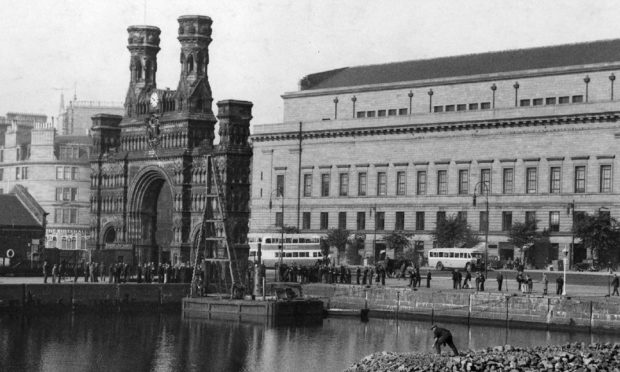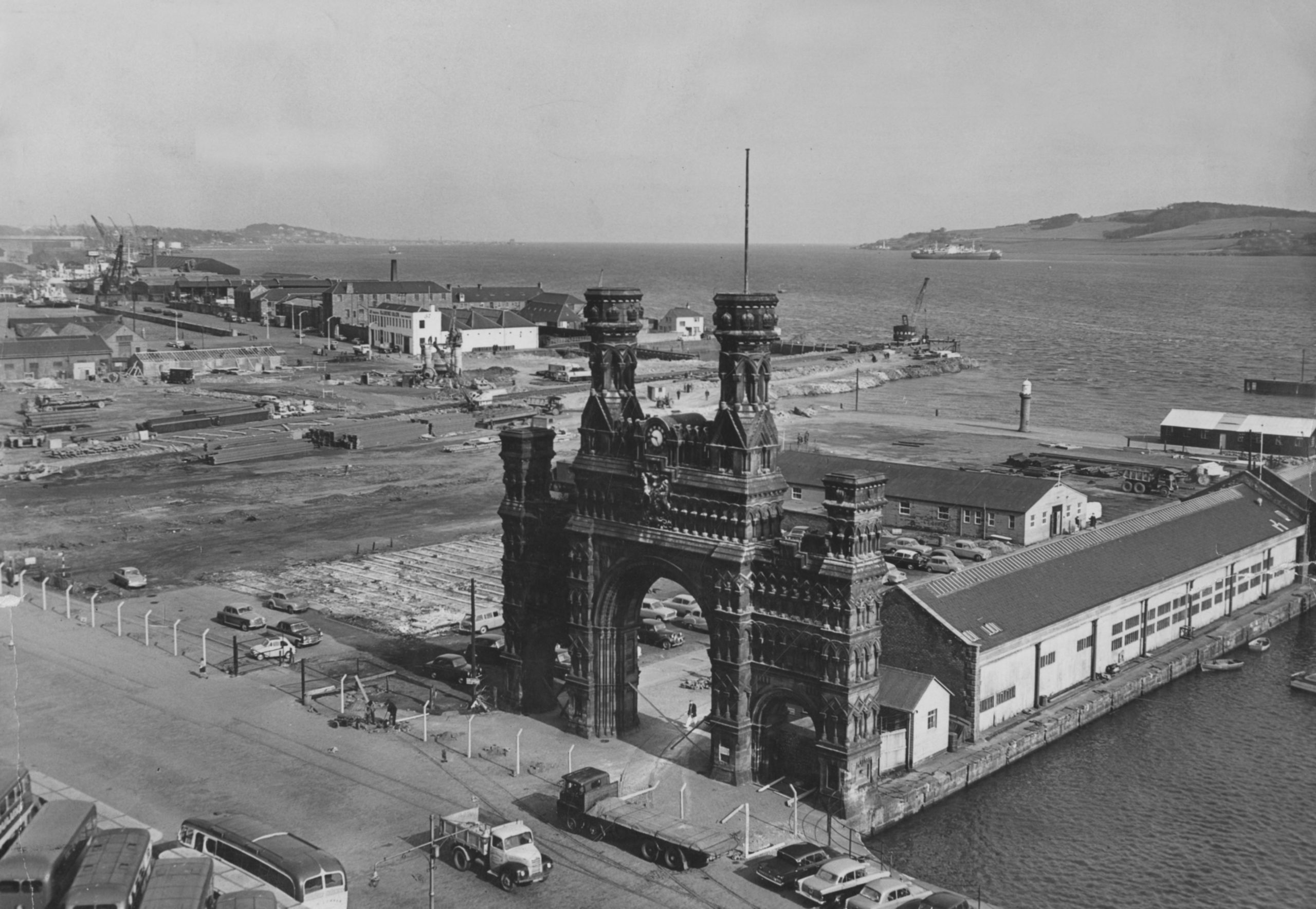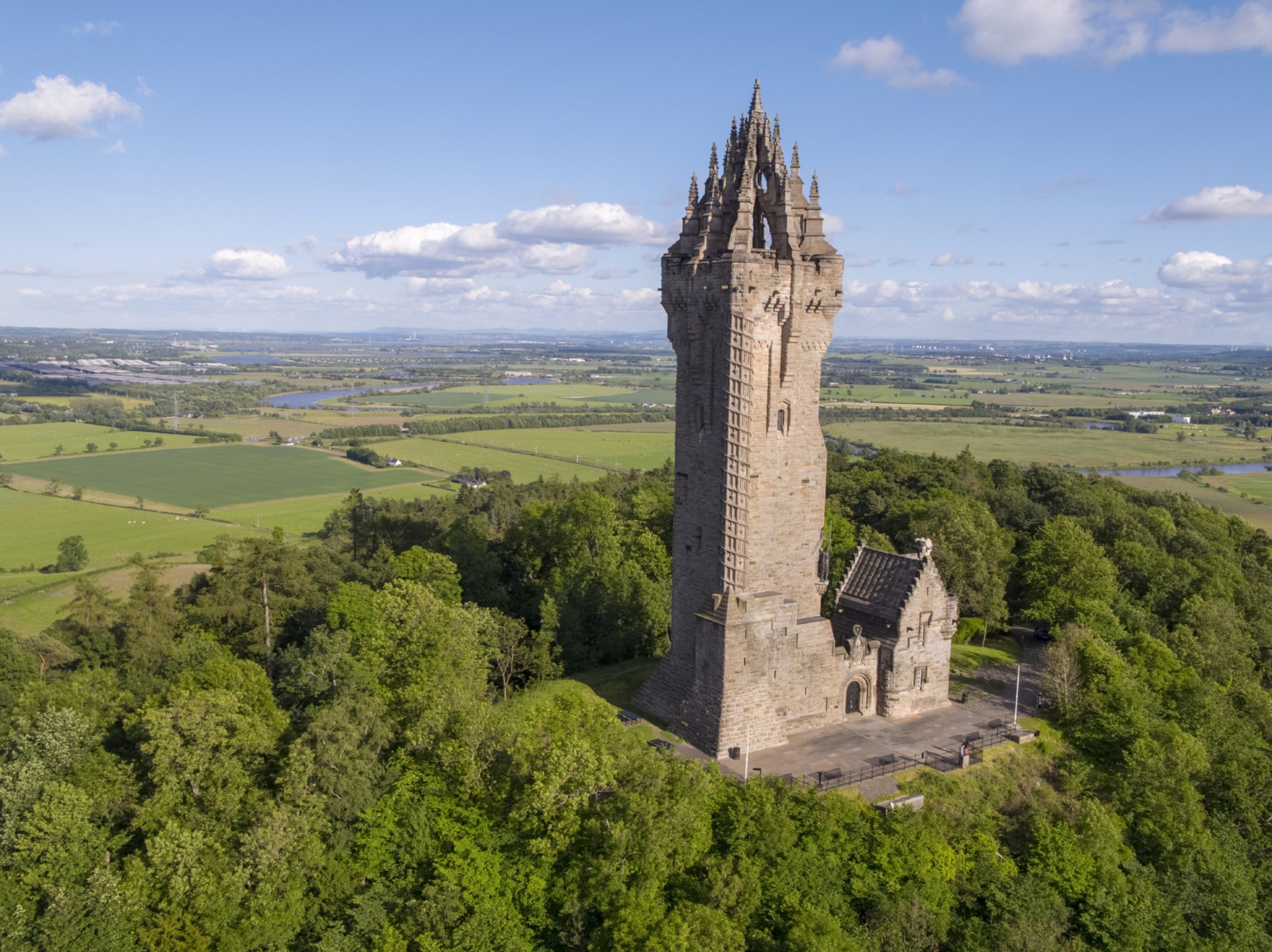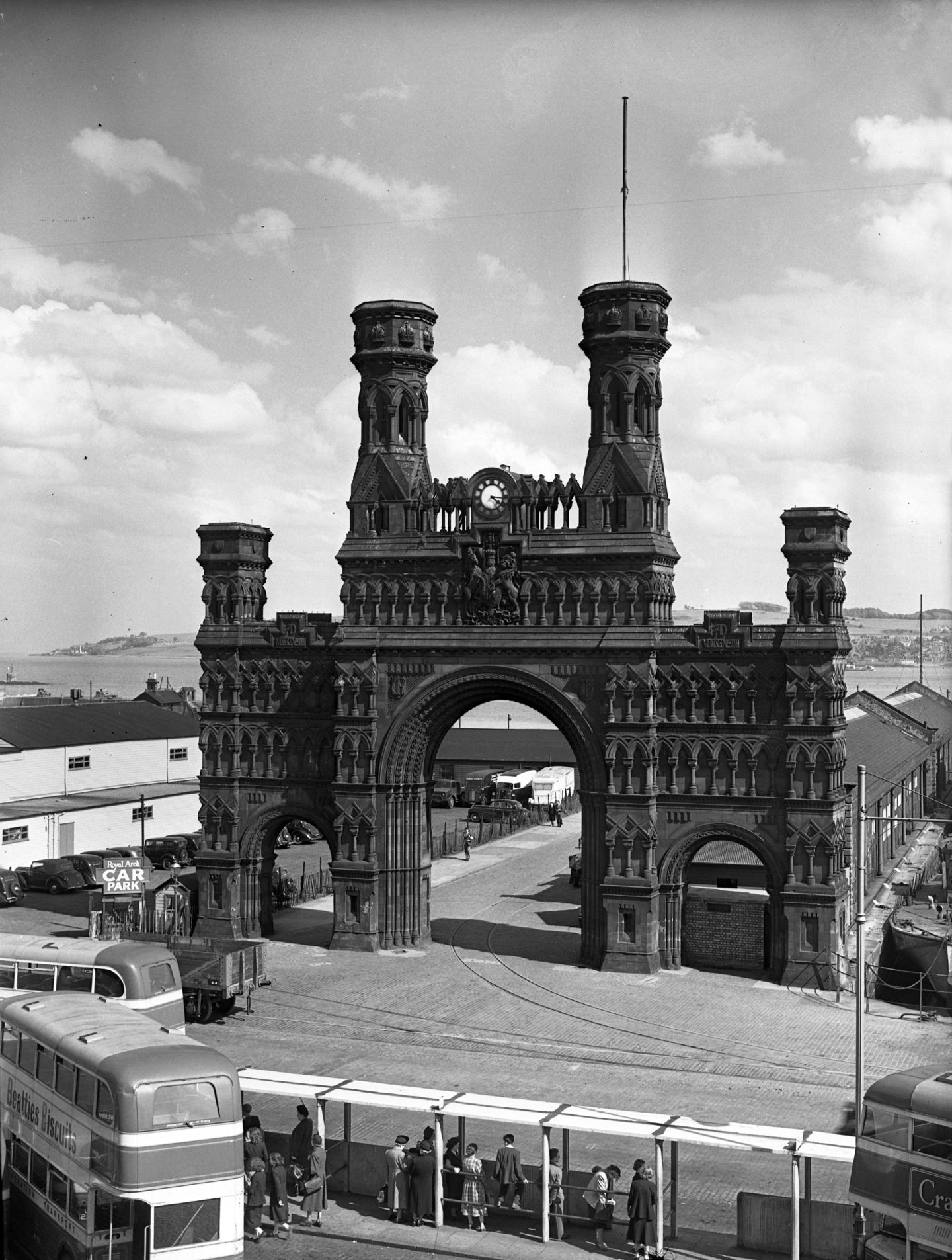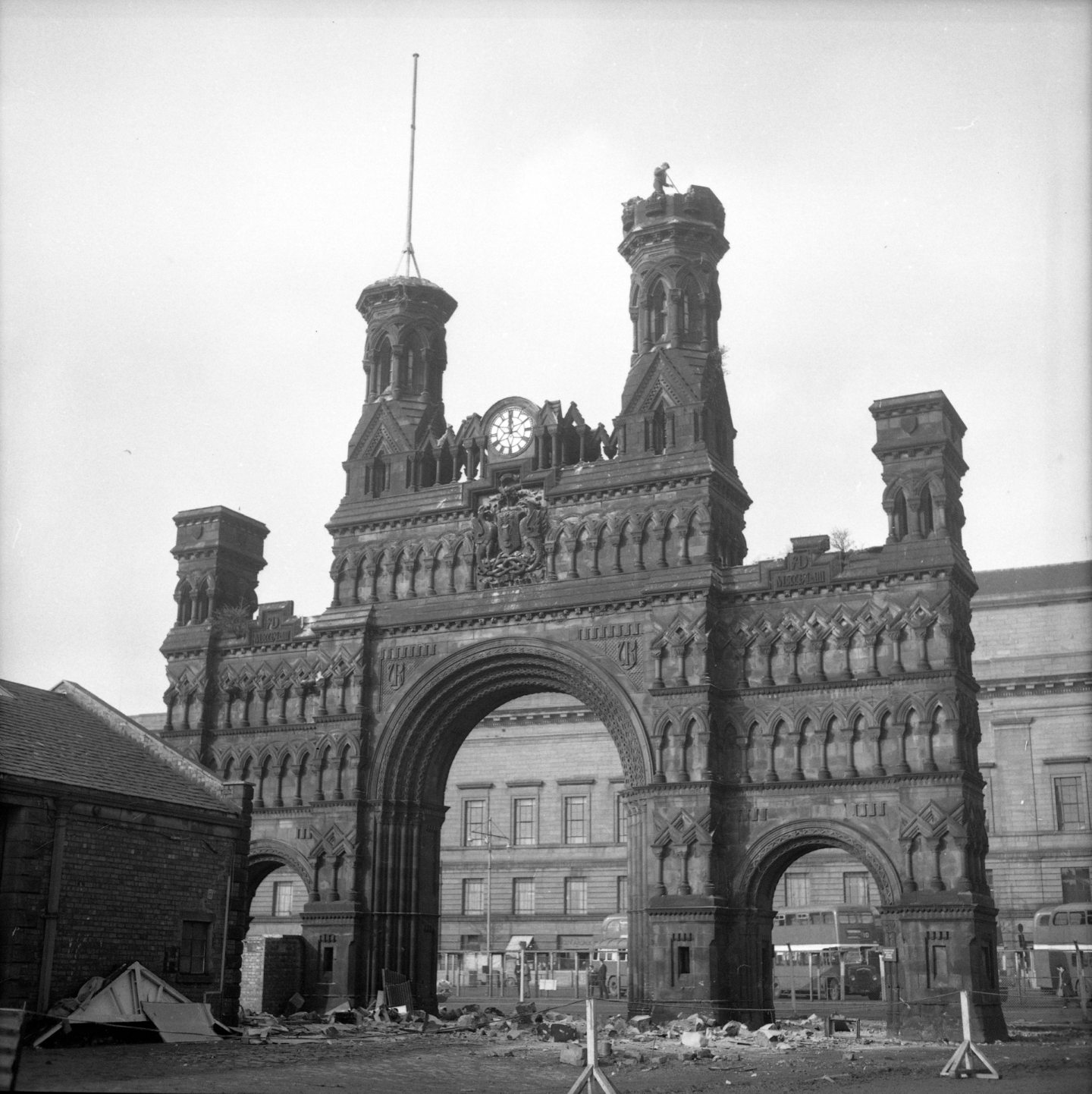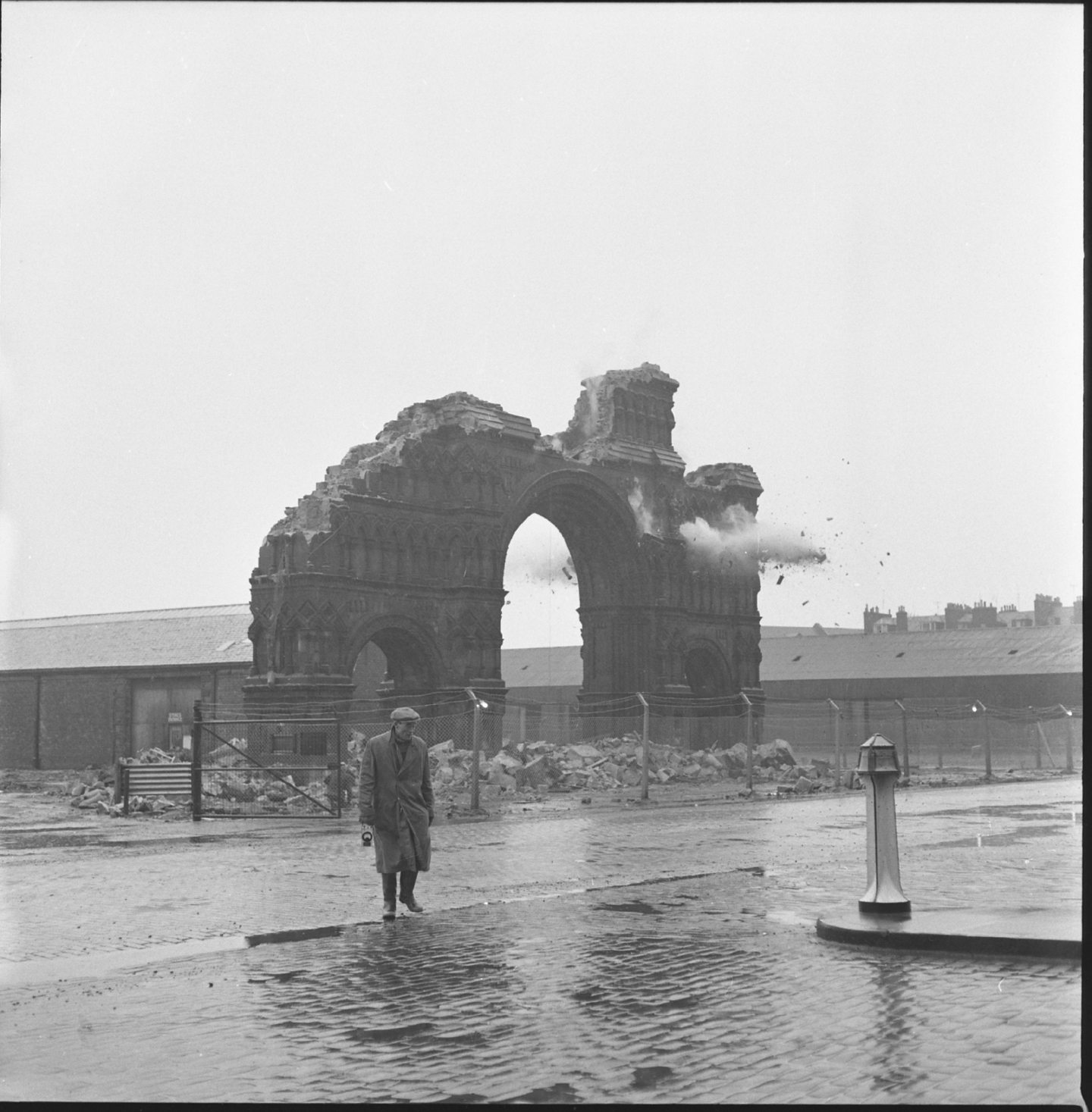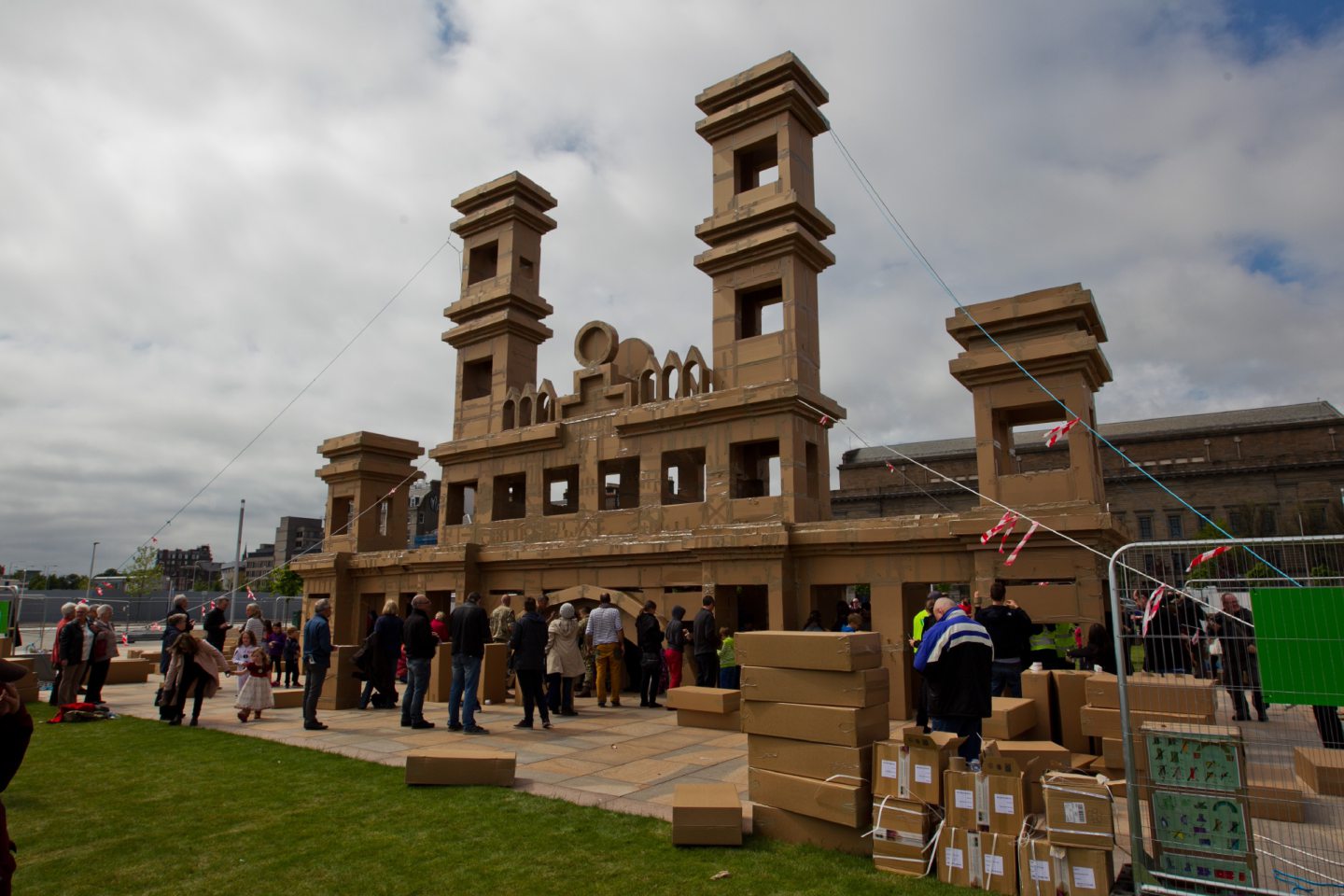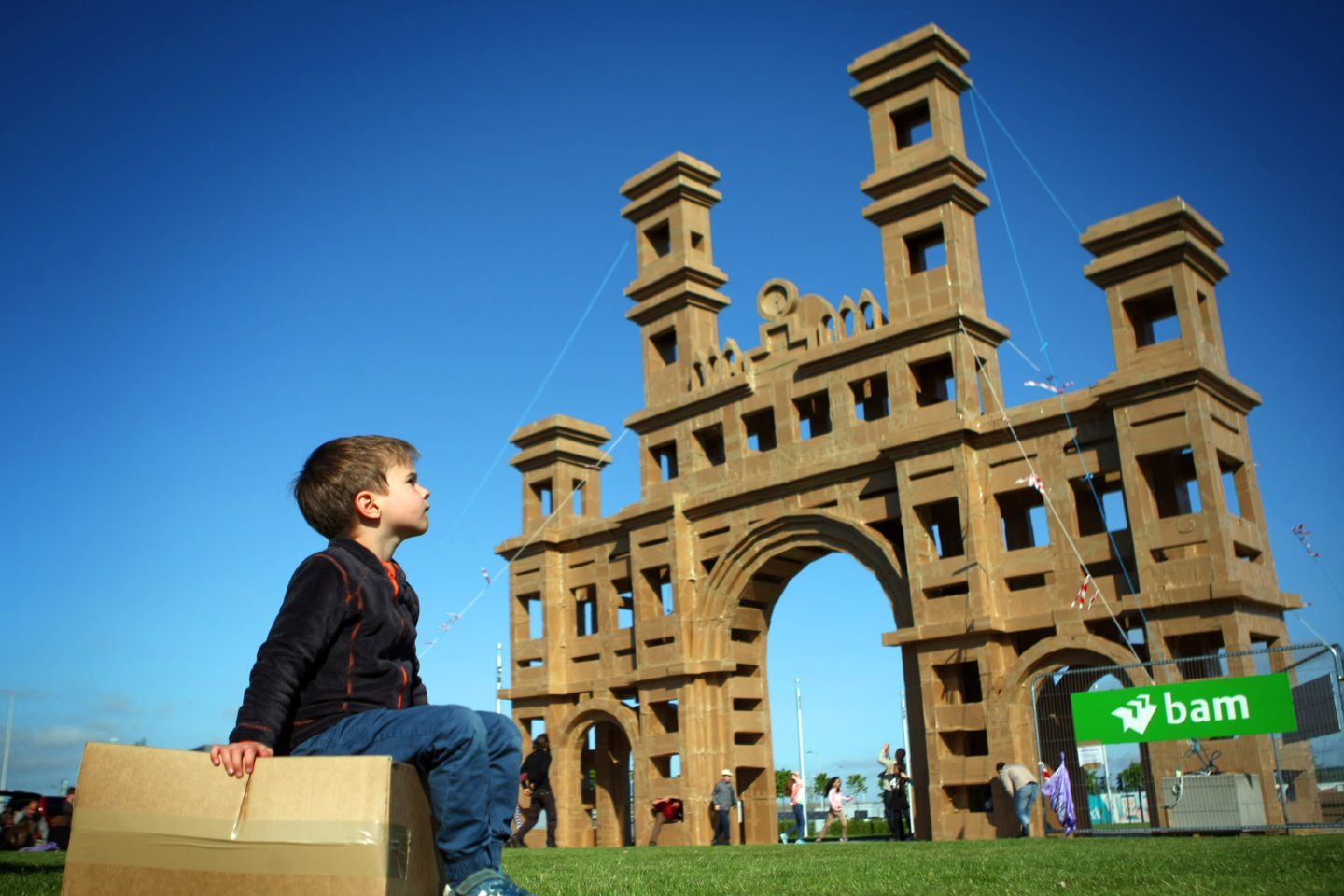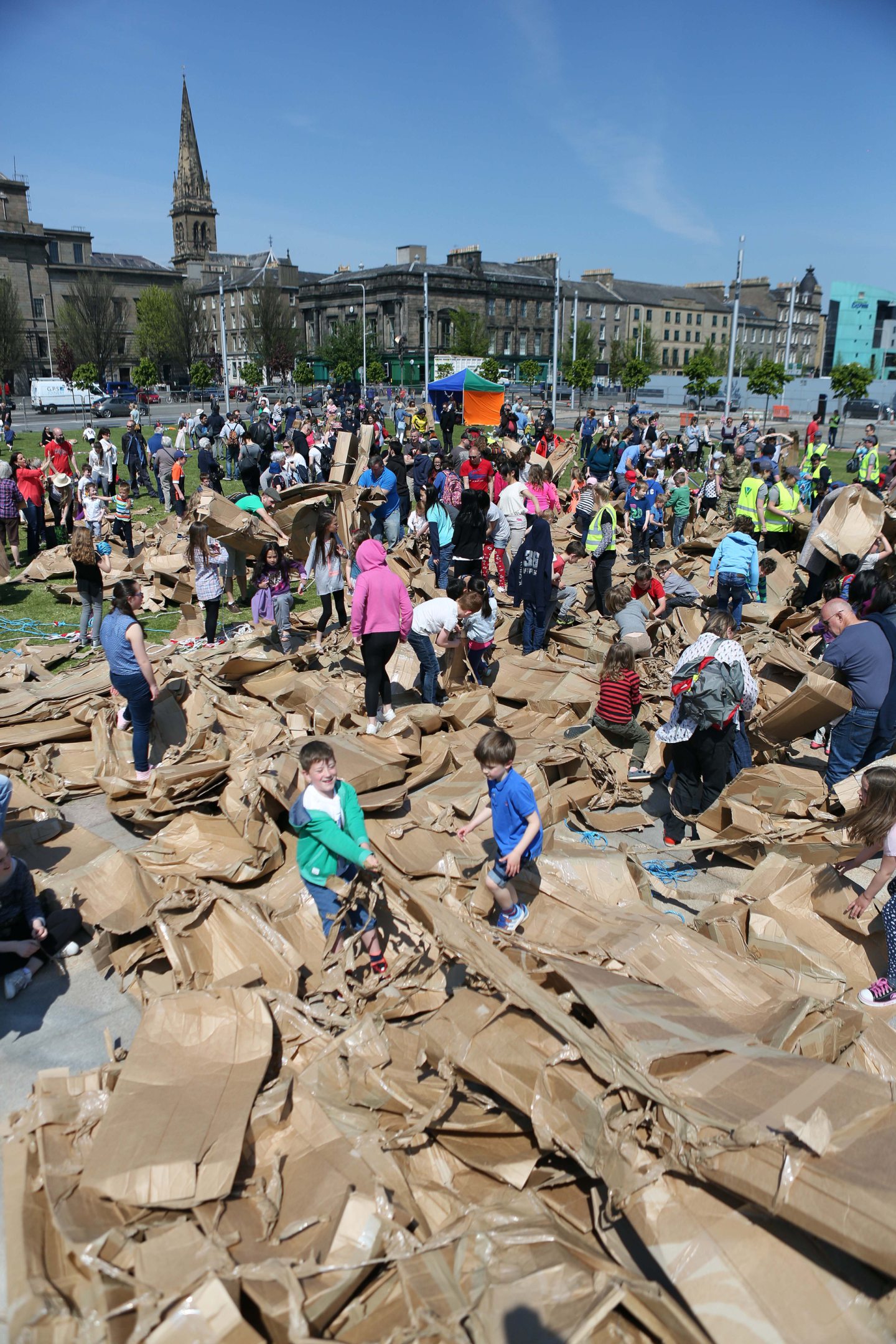Five years ago Slessor Gardens was home to a cardboard copy of the Royal Arch which stood in Dundee from the mid-1800s until it was demolished in 1964 to make way for the new road bridge.
For some the demolition was a tragedy, for others it was a long time coming as the structure became an unkempt ‘eyesore’.
It is a debate that has gone on for decades – should it have been razed to the ground in the first place and should it be brought back to life?
Celebrating a royal visit
The landmark’s local name of the Victoria Arch gives a clue to its origins.
It was erected between 1848 and 1850 to commemorate Queen Victoria and her husband Prince Albert visiting the city in 1844.
While this may not seem like the sort of occasion that would usually warrant a 54 foot tall landmark, this visit was celebrated as it was the first time a British monarch had visited Dundee since the 17th century.
Victoria and Albert were visiting the Duke of Atholl and his nephew, Lord Glenlyon, when the royal boat landed at the arch site – the couple later returned to the city and embarked for London in October 1844.
It wouldn’t be the last time Victoria would visit Dundee, though, as she would often stop there as it was on the way to Balmoral.
Following the historic visit, harbour engineer James Leslie designed a wooden arch and after a design competition for a durable structure it was John Thomas Rochead who was commissioned to design the sandstone monument.
John Thomas Rochead and his monumental designs
John was born in Edinburgh in 1814 and began his working career in 1831 working as an apprentice for Edinburgh architect, David Bryce before being employed by Glaswegian architect David Hamilton in 1841, working alongside Thomas Gildard, who became a lifelong friend.
Winning the Royal Arch competition would be just one of many famous landmarks Rochead would design – 10 years later he was commissioned for what is probably his most famous piece of work, the Wallace Monument in Stirling.
The Wallace Monument, which was completed in 1869, went £5000 over budget which resulted in the bankruptcy of the contractor and Rochead never received his fee.
His apprentices at this time included John Hutchison, who in turn trained Charles Rennie Mackintosh.
The Royal Arch
The monument Rochead designed to be placed on Dock Street consisted of a large, triumphal arch, flanked by two smaller side arches, with two central turrets.
It featured ornate carved stonework across its 80-ft width and is said to have cost somewhere between £2,270 and £3,000, roughly £400,000 in today’s money.
It was mostly funded by public subscription and harbour trustees.
Artists, photographers and authors all used the Royal Arch image and it was recognised across the world.
Despite the arch’s grand appearance when built, over the following decades it became unkempt with the sandstone exterior blackening over time and it became less of an attraction to Dundonians, except the city’s pigeon population who began using the arch as a very posh public loo.
By the early 1960s, over 100 years since the arch’s erection, Dundee was undergoing a waterfront transformation with the city creating a ring road and the Tay Road Bridge was in its early stages of construction.
It was decided that the Royal Arch would be demolished as part of the land reclamation scheme.
The demolition and the arch’s legacy
The arch finally fell on March 16 1964 when it was blown up with dynamite and the rubble which was left behind was dumped in the docks.
Fragments of the arch were uncovered while the waterfront was being redeveloped in 2010 and its foundations were uncovered in 2014.
The demolition has generated debate ever since.
There are those that loved the arch and those who simply loathed it.
In 2015, a petition was launched to build a replica of the arch with Dundee City Council stating that they “could never have rebuilt something like it”.
Although hopes of a new arch were squashed by the council, granite paving slabs were put on the site of the arch, and four trees were planted nearby to commemorate the landmark.
In May 2016 however an arch did reappear in Slessor Gardens, but only for a day.
The People’s Tower Project
The People’s Tower project invited people to help create a replica of the arch in Slessor Gardens in May 2016 using 1,200 cardboard boxes held together with masking tape.
Work started one Saturday morning with hundreds of locals helping to secure the thousands of boxes together.
The structure was hoisted in the air while additional levels were added underneath until it stood nearly 17 metres tall.
By the afternoon the cardboard arch, weighing around 1,200 kilograms, had been completed – it was a process much quicker than when the original was constructed.
However French artist Olivier Grossetete’s work was not complete until the building, which had been painstakingly designed on computer, was destroyed.
Volunteers pulled the arch down at 1pm the following day, a Sunday, before hundreds of children were allowed to run on to it and trample it down into nothing.
The brief reappearance of the arch would once again spark calls from some for a permanent structure to be built in Slessor Gardens.
An online petition demanding the rebuilding of the arch received hundreds of signatures.
Grossetete’s team of 10 workers have carried out similar projects around the globe but have rarely encountered such an emotional response.
Team member Dirk Dhont said: “People were hugging us and saying they were so grateful to us for doing it.”
Despite the emotional response there are no plans in the current waterfront development to resurrect the Royal Arch.
For many years locals have been divided on the issue of the Royal Arch’s demolition but was the demolition a contempt for unique architecture or historical significance or was it an eyesore that should definitely have been no more?
It is an argument that will continue to rumble on.
The ‘deadly lakes’ which brought The Big Stink and death and disease to Dundee
